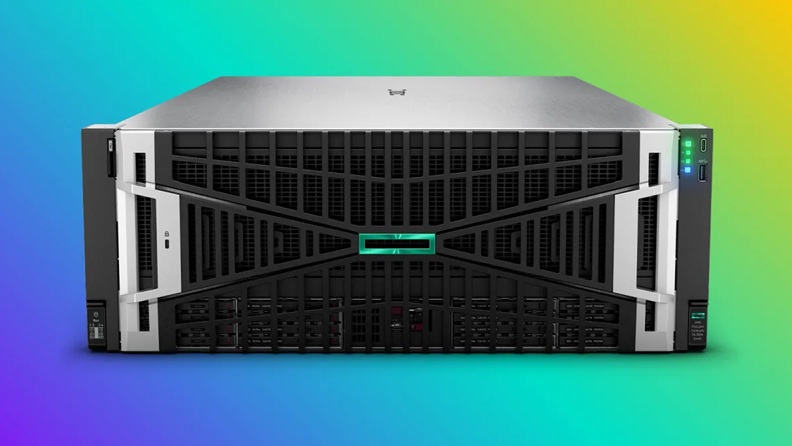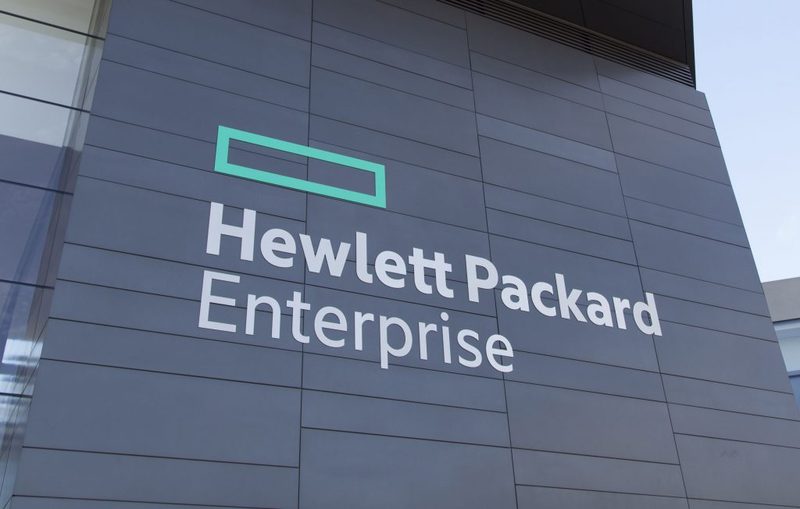Enterprise AI adoption has compelled hardware manufacturers to make decisions on whether to focus on security, efficiency or automation in system design. Based on its February announcements, Hewlett Packard Enterprise Co. has chosen to provide all three.
The company’s release of the most recent generation for its ProLiant line of servers illustrates how AI is driving innovation across the enterprise technology spectrum. HPE’s enhancements for ProLiant are geared to provide servers that meet the demands of data-intensive AI workloads while engineering innovative solutions for an increasingly hybrid world.
“Having worked for HP and then what is now HPE, I know the innovation that began in 1939 when Bill Hewlett and Dave Packard started their company in a garage in Palo Alto,” said Rob Strechay, managing director of theCUBE Research. “But legacy only gets you so far. What HPE is doing now is getting back to and honoring the history and legacy of Hewlett Packard Labs and the innovation continually shaping infrastructure for almost nine decades.”
This feature is part of News Media’s exploration of HPE’s market impact in enterprise AI and the server industry. (* Disclosure below.)
Server enhancements for enterprise AI
February’s unveiling of eight new HPE ProLiant Compute Gen12 servers marked the third release of optimized ProLiant systems over the past twelve months. In March of last year, the company announced an on-premises supercomputer for generative AI that combined HPE ProLiant DL380a Gen11 servers and Nvidia’s H100 graphics processing units.
This was followed in November by updates for HPE’s portfolio of high-performance computing platforms that introduced ProLiant Compute XD servers designed to support the deployment of large AI clusters. HPE has focused on building a foundation of server offerings that could be optimized for price performance while delivering support for AI training, tuning and inference workloads.
With its latest release of ProLiant Compute Gen12 servers in February, HPE is seeking to address the “Achilles heel” now being confronted by IT managers who suddenly find themselves with outdated infrastructure in the modern age of AI deployment. Time has finally caught up with the old server paradigm.
“Just because you can run an old server in your data center doesn’t mean that you should run an old server in your data center,” said Krista Satterthwaite, senior vice president and general manager of mainstream compute at HPE, during theCUBE’s exclusive broadcast of the “Get Future Ready, NOW!” event in February. “Old servers waste time, they waste space, they waste power. They don’t have the latest security, they don’t have the latest management tools and it’s hard to keep the software — the old software, the old open-source software — maintained. The case for refresh has never been stronger.”
Building in security
For HPE, that refresh has been defined by a three-pronged approach to provide servers that are secured, optimized and automated as organizations increasingly adopt AI solutions for enterprise tasks.
HPE has built a level of security into ProLiant Gen12 that reflects the need for hardware safeguards in a rapidly shifting threat landscape. This includes the company’s Integrated Lights-Out, or iLO, management system that enables remote monitoring with embedded security features. A Silicon Root of Trust equips each ProLiant server with a unique cryptographic fingerprint, making it more difficult to execute malicious firmware.
HPE has extended its server security protection to meet Federal Information Processing Standards 140-3. This framework, known as FIPS 140, was developed by the U.S. federal government to provide long-term data protection against future vulnerabilities created by the use of quantum computers to break established cryptographic security keys.
“We’ve added quantum-resistant security algorithms to be able to be ready for what’s next,” said John Carter, vice president of server product, quality and technical pursuit at HPE, during theCUBE’s exclusive interview. “We’ve heard more and more about quantum. These systems are already built to be ready for that kind of innovation. It’s not a matter of if you need a more secure system at this point; it’s a matter of when you’re going to need it.”
HPE’s enhancements to its ProLiant portfolio also reflect industry concerns around maintaining a secure supply chain. In 2020, HPE launched its Trusted Supply Chain initiative to provide end-to-end security in servers for public sector customers. Two years later, the company extended that to its ProLiant line, and its most recent enhancements include secure enclave, a dedicated security processor that guards against firmware attacks.
Meeting performance demand at the edge
While security remains a top priority for hardware vendors, the process of fine-tuning AI and generating large workloads has also placed a premium on server optimization for performance and efficiency. HPE has significantly boosted ProLiant’s capabilities in this area compared to previous generations, according to Satterthwaite.
“When it comes to our latest generation servers, the performance and efficiency they deliver is pretty shocking,” Satterthwaite said. “If I compare one ProLiant Gen12 to Gen10, you would need seven Gen10s to equal the performance of one Gen12.”
Performance for enterprise AI is also being driven by an expansion of devices at the edge. Worldwide spending on edge computing reached $232 billion in 2024, according to IDC, and it is projected to climb towards $350 billion over the next two years.
ProLiant Gen12 servers feature Intel Xeon 6 processors that are designed to support edge environments, a part of HPE’s ongoing collaboration in server technology with the chipmaker. Satterthwaite has described the edge as a bit more of the “Wild West” when compared to data center scenarios, and HPE is seeking to help customers manage compute resources efficiently as the edge expands.
This focus on efficiency also includes delivery of server technology that can increase energy savings. HPE has announced that its new servers reduced power costs by up to 65% per year, facilitated in part by liquid cooling options on one and two-socket rack servers. Liquids absorb and transfer heat more efficiently than air, an important consideration based on studies that have shown that cooling accounts for approximately 40% of the average data center’s energy usage.
“HPE has been doing liquid cooling for quite some time,” Carter noted. “We’ve got 300-plus patents that are sitting in our back pocket, and we are able to leverage them now into our mainstream enterprise portfolio.”
AI-driven automation
HPE is also leveraging patented technology to expand its role in server automation. ProLiant Gen12 can be managed with HPE Compute Ops Management, a proprietary software platform that secures and automates server environments.
This AI-driven automation can provide organizations with energy efficient solutions, forecasting power usage and determining thresholds for controlling emissions. HPE is integrating AI into the hardware that powers AI for others.
“We’ve just introduced some new features around actually taking AI models and providing insights into how we project that your energy usage will happen over the next six months so you can make proactive decisions around environmental, social and governance,” Carter said. “We really plan out our power environment because we all know power’s not getting any cheaper, so it gives you that kind of capability to think ahead in your environment.”
HPE’s enhancements for ProLiant illustrate how server providers are continuing to build systems for the hybrid world. Enterprises are seeking more efficient and secure ways to build AI and deliver value for customers, and this has fueled HPE’s vision, one that prioritizes platforms over products, with across-the-board integrations that support hybrid cloud solutions.
“We think that customers shouldn’t chase the tech products for AI and instead, should start embracing a platform-based approach to tackle AI,” said Jason Newton, vice president of global marketing at HPE, in an interview with theCUBE. “It’s the same approach that we recommended for tackling the hybrid cloud issues. We realized the only way to make that happen and to deliver a consistent experience across everything was to build a platform specifically for the demands of hybrid cloud. You’ll see a lot of innovations around the platform experience.”
(* Disclosure: TheCUBE is a paid media partner for the “Get Future Ready, NOW!” event. Neither Hewlett Packard Enterprise Co., the sponsor of theCUBE’s event coverage, nor other sponsors have editorial control over content on theCUBE or News.)
Photo: HPE
Your vote of support is important to us and it helps us keep the content FREE.
One click below supports our mission to provide free, deep, and relevant content.
Join our community on YouTube
Join the community that includes more than 15,000 #CubeAlumni experts, including Amazon.com CEO Andy Jassy, Dell Technologies founder and CEO Michael Dell, Intel CEO Pat Gelsinger, and many more luminaries and experts.
THANK YOU








